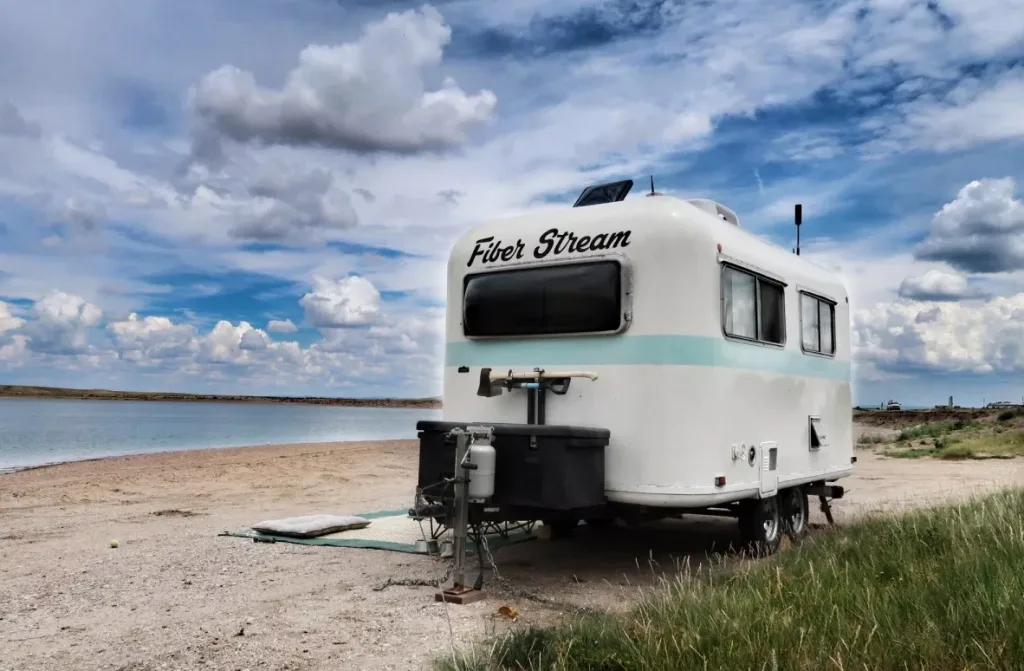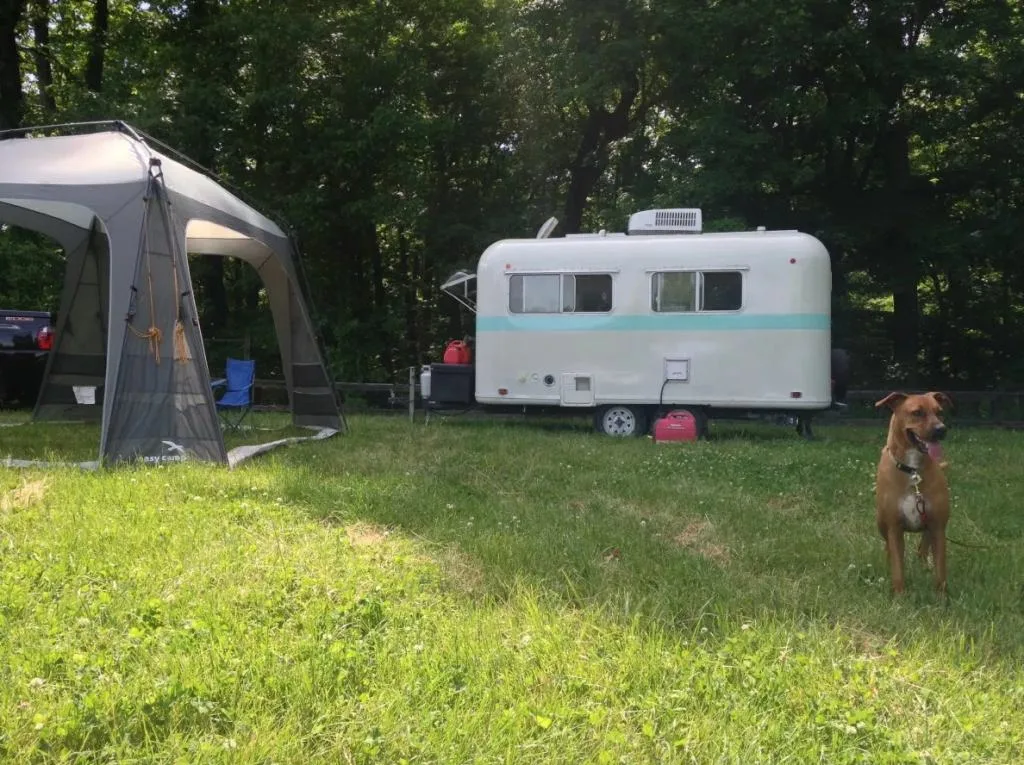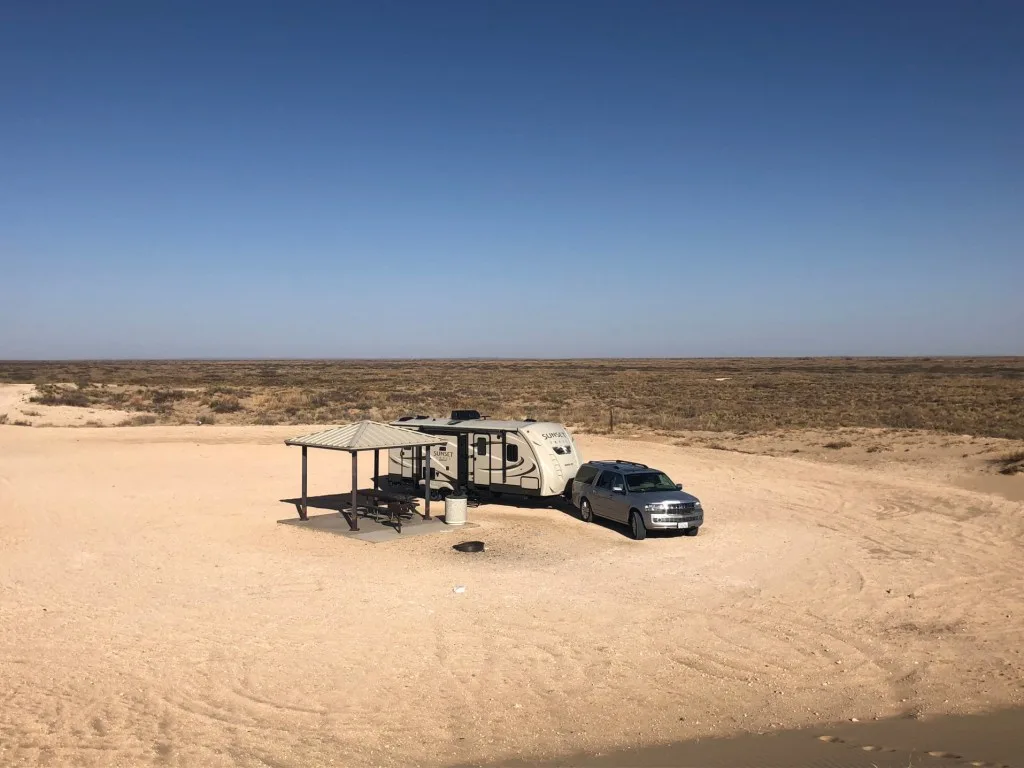If you’ve been cruising around the RV world long enough, you’ve probably heard of “dispersed camping.” It’s got a certain vibe that makes it sound rugged and mysterious, but it’s actually pretty straightforward. So, what exactly is dispersed camping?
Think of it as camping in the wild without the red tape—no designated campsites, no electricity, no water hookups, and definitely no overcrowded picnic tables next to your RV. It’s just you, your gear, and the great outdoors (for better or worse).
Let’s break down everything you need to know about dispersed camping, from what to expect to how to get the most out of it.

The Basics: Dispersed Camping, Explained
Dispersed camping is the wild child of the camping world. Instead of setting up at a traditional campground with rows of RVs and families grilling burgers, you’re out there in nature—literally camping on public land that hasn’t been designated as an official campground. Most dispersed camping happens in national forests, Bureau of Land Management (BLM) areas, and some state-owned lands.
There are zero amenities—yup, that means no restrooms, showers, or fire pits. You’re responsible for your own food, water, waste, and safety. It’s all about embracing the “leave no trace” philosophy: whatever you bring in, you take out.
And guess what? No reservation systems, no fees, and no neighbors blasting country music all night long.
TL;DR: It’s free camping in nature, with no frills. Just you and your survival skills.

The Appeal: Why Go Dispersed?
So why would anyone choose to go without a nice level parking pad, running water, and maybe a hot shower? Well, for one, freedom. Dispersed camping is the ultimate choose-your-own-adventure. You find a spot that calls to you, park your rig or pitch your tent, and that’s your home for the night (or week). There’s no one telling you where to camp, and no camp hosts checking in on you. It’s the perfect option for people who want to feel like they’re actually in nature, not just parked in a nature-themed lot.
Another major bonus? Solitude. If traditional campgrounds feel too crowded or noisy for you, dispersed camping offers that peace and quiet you’ve been craving. You can set up camp miles away from anyone else, with only the stars and wildlife to keep you company. Not to mention, many dispersed sites offer jaw-dropping views that most campgrounds could never dream of.
And let’s not forget: It’s free. Yep, no fees, no reservations, no camp store charging $10 for a bag of ice. It’s budget-friendly adventuring at its finest.

The Rules: Yes, There Are Still Some
Even though it feels like the Wild West, there are still some basic rules you gotta follow when dispersed camping. The number one thing to remember? Leave No Trace. This means packing out all your trash, being careful with fire, and not tearing up the land with your vehicle.
Here are some basic guidelines:
- Camp 200 feet away from any water sources like rivers or lakes. This helps preserve natural water ecosystems.
- Stick to existing sites when possible. If you see a spot where someone else has already camped, use it instead of creating a new one to minimize your impact on the environment.
- Fire safety is key. If fires are allowed, make sure to fully extinguish them before leaving your site. But in some areas, campfires are banned, so check local rules.
- Stay within limits. Most places have a 14-day stay limit, which means you can camp in one spot for two weeks before moving on. Keep it moving, folks!

What to Pack for Dispersed Camping
When you’re on your own out there, you’ve got to be prepared. Here’s a quick rundown of what you’ll need to survive (and thrive) during a dispersed camping trip:
- Water: Bring enough for drinking, cooking, and washing up. No taps out here!
- Food: Easy-to-cook meals or snacks that don’t require refrigeration are your best bet.
- Waste management: Whether it’s a portable toilet or good ol’ digging a cat hole, you need a plan for when nature calls. Remember, leave no trace.
- Navigation tools: GPS, maps, or apps like Gaia GPS can save your skin when you’re way off the beaten path.
- Fire starter and fuel: For cooking and warmth if fires are allowed. A portable stove is a must if campfires aren’t permitted.
- First aid kit: Trust me, you don’t want to be in the middle of nowhere without one.
- Weather-appropriate gear: Layers, rain protection, and solid shoes. You’re exposed to the elements out here.
- Entertainment: Bring a book, journal, or just soak up the quiet. You’ll be off the grid—literally.

The Best Dispersed Camping Spots
Ready to ditch the campgrounds and give dispersed camping a shot? Here are some primo spots in the U.S. for your next off-the-beaten-path adventure:
- National Forests: Most national forests allow dispersed camping for free. Popular spots include Colorado’s San Juan National Forest, the Sierra Nevada in California, and the Coconino National Forest in Arizona.
- BLM Land: Bureau of Land Management land is mostly in the western U.S. Utah’s BLM land is legendary for dispersed camping, especially near Moab and Canyonlands. Wyoming, Nevada, and California are also hotspots.
- Desert Camping: The desert landscapes of New Mexico, Arizona, and southern California are perfect for those looking to camp under a sky full of stars. Just make sure to bring plenty of water and watch for wildlife.

Is Dispersed Camping for You?
Dispersed camping isn’t for everyone. If you need electricity, running water, or an Instagrammable campground, you might want to stick to the more traditional RV parks or campgrounds. But if you’re itching to get off-grid, feel more connected to nature, and find your own slice of wilderness—dispersed camping might just become your new favorite thing.
There’s something special about waking up to a view of untouched landscapes, with no one around for miles. It’s raw, it’s real, and it’s a chance to remind yourself why you love camping in the first place. So, next time you’re planning a trip, why not skip the crowds and go rogue? Dispersed camping is out there waiting for you, all you’ve got to do is find it.

We’ll Help You Find the Best Free Camping in the USA
You should give it a try!
As a matter of fact, these free campsites are yours to enjoy. Every time you pay federal taxes, you’re contributing to these lands.
Become a FREE CAMPING INSIDER and join the 100,000 campers who love to score the best site!
We’ll send you the 50 Best Free Campsites in the USA (one per state). Access the list by submitting your email below:
My wife and I want to thank you for your time spent sharing so much information. It is great for beginners. We have a 1984 fiber stream and I have literally gutted it out entirely and have started rebuilding it from scratch. To date it is approximately 70 percent complete. We took it out on a test run this weekend at a nearby rv park.
Thank you for emphasizing camping time limits and protection of natural resources on precious public lands.